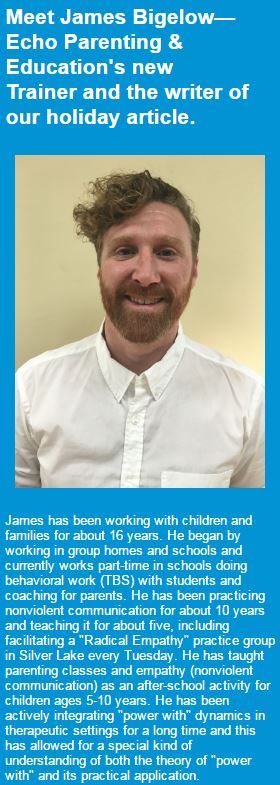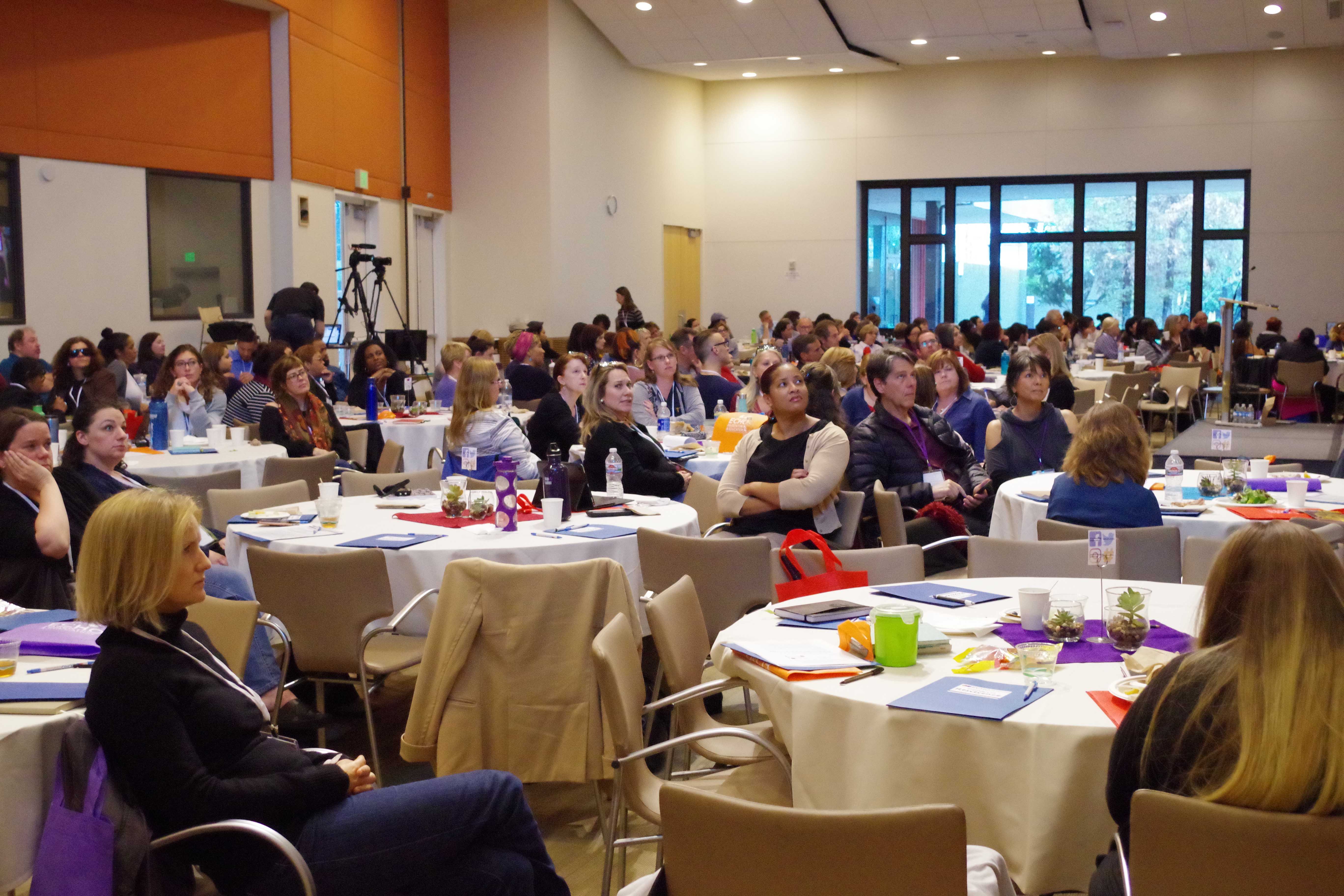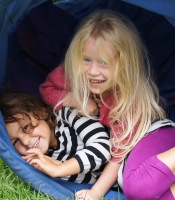

Hi all! My name is James. I’m a new trainer at Echo and excited to be a part of Echo family. I’ve been working with children and families and practicing nonviolent communication for about 16 years now. I thought I would share some quick tips and ways to frame things that might help you connect better with those you love over the holidays.
One of the things I’ve learned from nonviolent communication is the idea of life as a practice. I invite you to practice without worrying about doing it right; just try it out and stay curious about what happens. Holidays can present us with many opportunities for practice because they can be so much fun… and also quite complicated. As well as lots of potentially triggering dynamics, there are opportunities for connection and love. What is it like to maintain who I am authentically and also look for connection during the holidays?
First I’d like to bring your attention to pace: If we’re looking to make room for new choices that move us toward connection, going slow can really help. When I go fast I do what I normally do. When I slow down I’m more likely to make a different choice.
Whenever you are able, take a breath. I’d also invite you to  close your eyes while doing it. Making time for a bit of self-regulation and centering can really help with being intentional. Perhaps you could excuse yourself to the restroom and run some water over your hands, splash water on your face, or even call a friend to vent. (But maybe you should check-in with the friend beforehand to make sure they are okay with offering this kind of support.)
close your eyes while doing it. Making time for a bit of self-regulation and centering can really help with being intentional. Perhaps you could excuse yourself to the restroom and run some water over your hands, splash water on your face, or even call a friend to vent. (But maybe you should check-in with the friend beforehand to make sure they are okay with offering this kind of support.)
Sharing space with folks we love, who maybe have very different ways of seeing the world, can be really hard… this is especially true if we think about life in the terms of right and wrong. When disagreeing it can be hard to remember the people we love are the people we love. A question I like to ask myself is:
“Do you want to be right or to connect?”
(Because we often don’t get to have both.)
Another question: “How am I telling my story?” When something happens that I don’t like (especially if I’m overwhelmed by it), I sometimes tell the story of what’s happening as if it were happening only to me. When I do this my focus is on choices made by others. Although this is a normal place to start, I’m better able to “practice”/work on myself when I shift my focus to my choices. “What can I do differently?” In the end, I’m the only one I have control over. “If I were able to do it again, without wanting anyone else to do or be different, what could I do?” Once you have an answer hold onto it and get ready to practice. Again, try to go slow (to allow for more intention) and stay curious regardless of outcome.
And what about deepening our connection with children? Here at Echo, we’re always inviting people to see behavior as communication. In practice, this looks like asking yourself, “What is the choice Jr. just made telling me?” And it also looks like, “What is my choice telling Jr.?”
When relating to children, it is also a good opportunity to practice giving the other person what you most want first. Think about how often children are told to listen… how often children are told listening is important. And how much time do adults spend listening to children? Not much.
Remember how I interact in the world tells the children around me what I value, and what to replicate. There are no interventions for children in the world that will “work” if my choices contradict them. Children learn primarily by mimicking, not by our words. They listen to our choices. If we want them to listen maybe we as adults might want to set some time aside to show we value listening.
Make time for 2-3 minutes of listening without interruption. Tell the child what you hear them saying. No fixing, problem solving or teaching. Try to do this once a day.
Redirect with, “Yes, and…” Find something to say ‘’yes” to before you ask the child to consider what is up for you. By way of example, if the child is playing in an unsafe way, first acknowledge (say “yes” to) how exciting the play is for them. Then ask them to include more safety. Tell the child they can play in lots of ways and you really want them to play in a way that’s fun for them AND we want it to be safe. When we redirect we say with our choices we value what’s up for the child and then we ask them to value what’s up for us. This allows for understanding, collaboration and connection and avoids power struggles and “either/or” dynamics.
I hope this helps.
Happy holidays!



